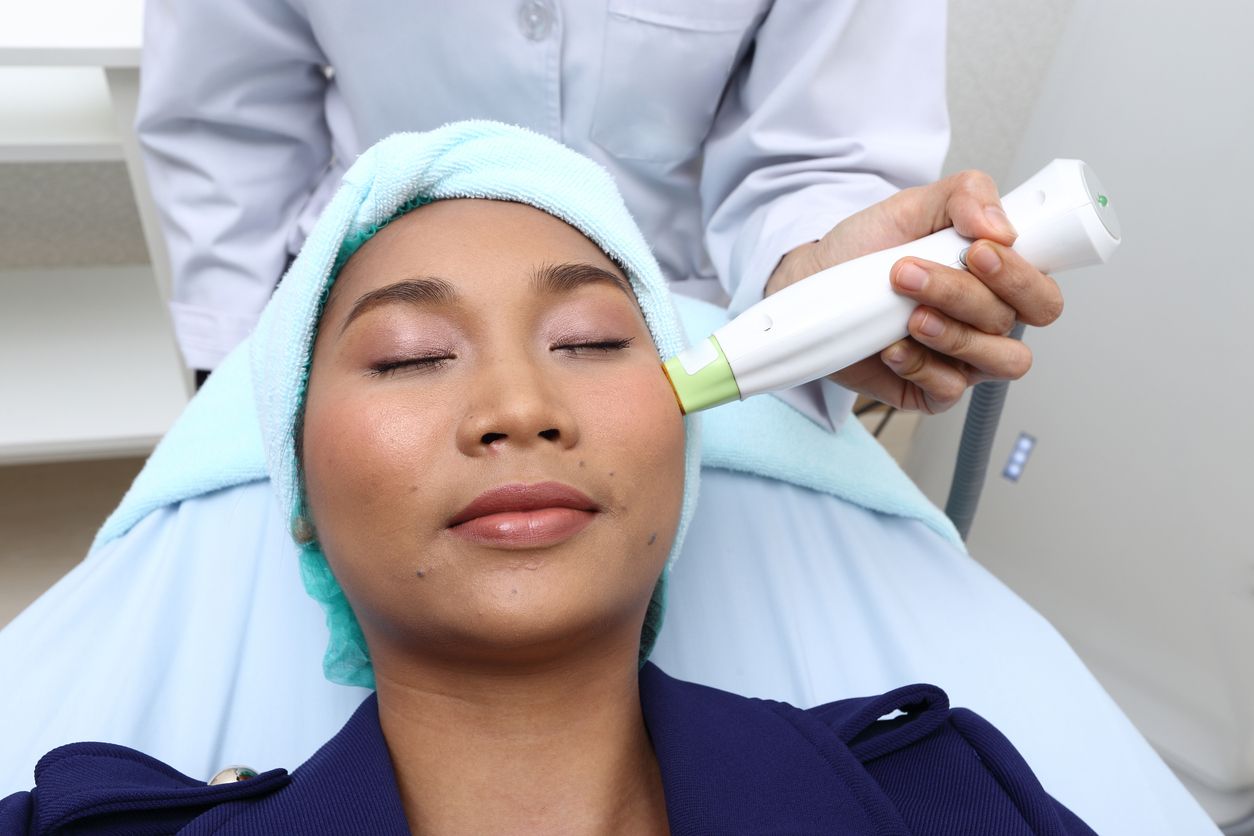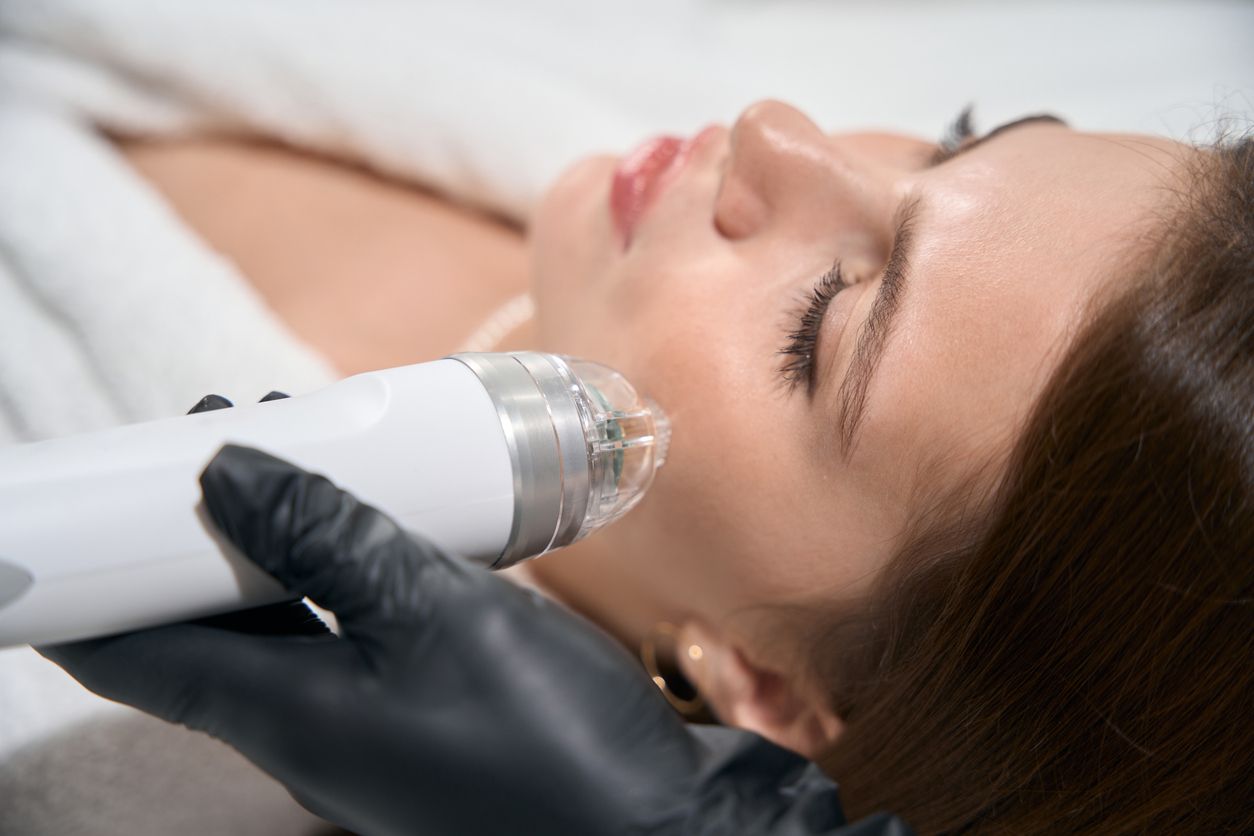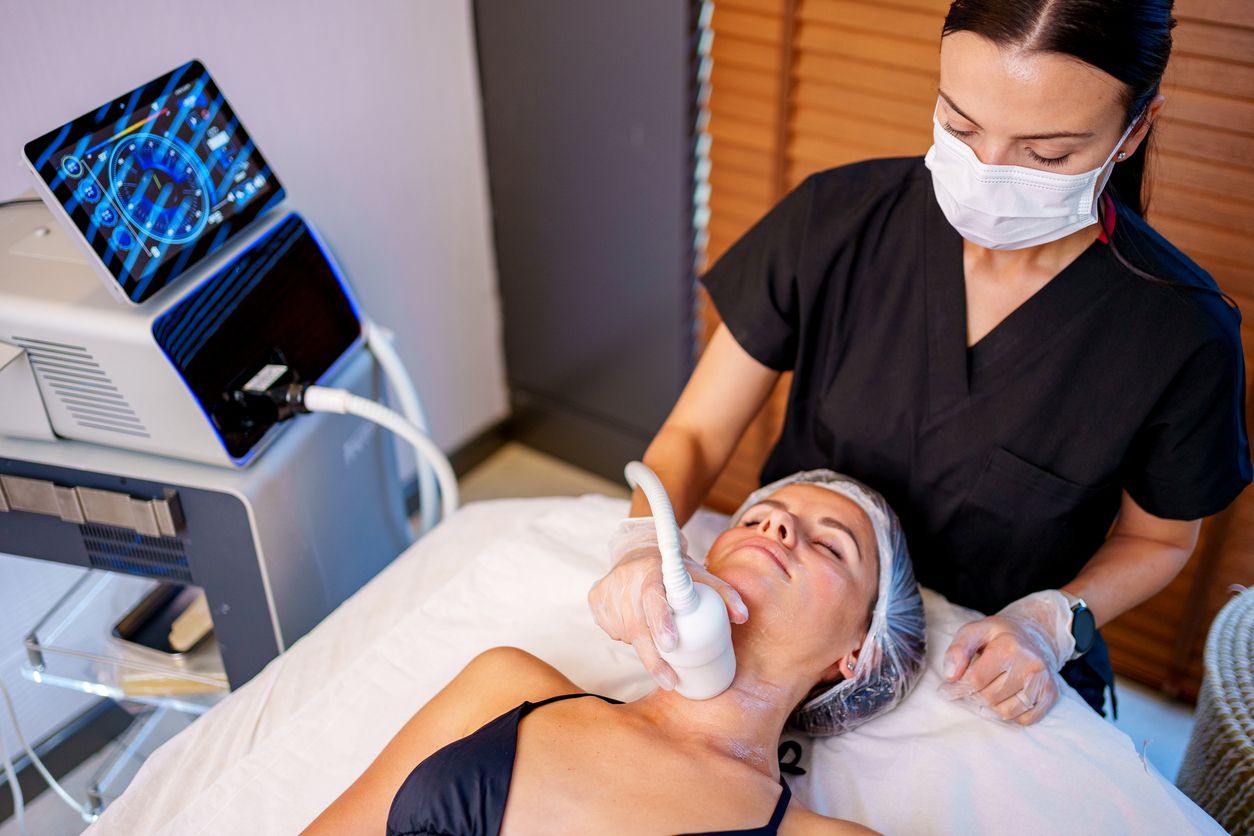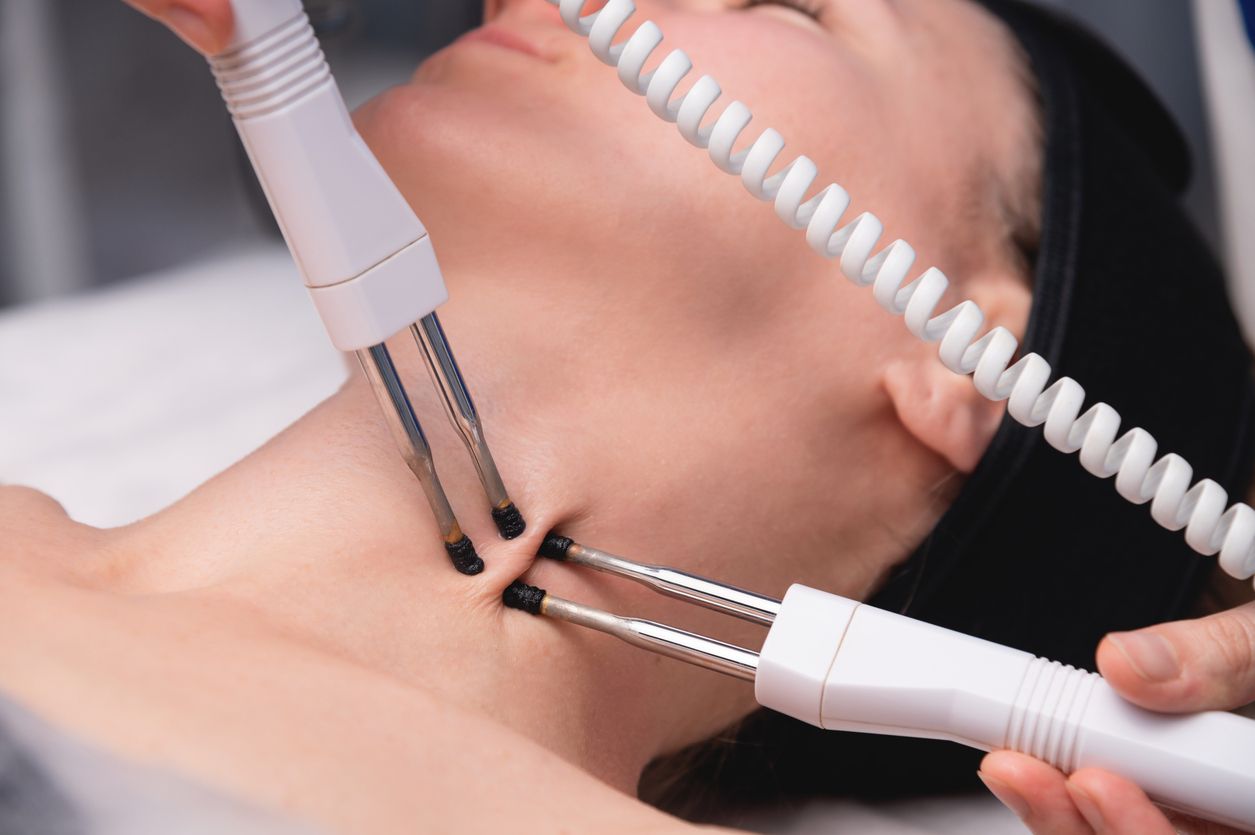- Home
- Trend
- Weight Loss Strategies
- Acne Tips
- Hair Health Information
- Blemish Removal Tips
- Acne Scar Removal Tips
- Muscle Building Techniques
- Intimate Care Tips
- Postpartum Intimate Care
- Eye Bags Wiki
- Tips for Face Slimming
- Secret of Permanent Hair Removal
- Breast Enlargement Tips
- Cure to Snoring
- Marionette Lines
- Skin-Tightening Secrets
Have you noticed your skin losing its youthful firmness? Are fine lines and wrinkles becoming more prominent? You might be experiencing skin laxity, a common concern as we age. This blog post will delve into what skin laxity is, what causes it, and how you can take steps to prevent or minimise its appearance.
What is Skin Laxity?

Have you ever noticed your skin losing its youthful bounce? Perhaps fine lines and wrinkles have started to appear more prominent, or maybe your jawline isn't as defined as it once was. These signs could be indicative of skin laxity, also called loose or sagging skin, a common concern as we age. But what exactly is skin laxity, and why does it happen?
When Your Skin Begins to Lax?
Skin laxity, commonly referred to as loose or sagging skin, is a prevalent concern associated with ageing skin. This phenomenon involves a noticeable loss of elasticity and firmness in the skin, often leading to the prominence of fine lines, wrinkles, and a less defined jawline. The root of skin laxity lies in the gradual decline of two vital components: collagen and elastin.
To comprehend skin laxity, envision the skin akin to a trampoline in its youth. Similar to how a trampoline's tautness allows for effortless bouncing, collagen serves as the primary structural protein providing firmness and support to the skin. Elastin, acting like microscopic springs, enables the skin to stretch and promptly return to its original position.
However, as we age, the production and quality of collagen and elastin fibres decrease. As the skin starts to lose collagen, this reduction in connective tissue components leads to a weakening of the skin's supportive framework, resulting in skin laxity. The connective tissues become less able to maintain the skin's firmness and elasticity, leading to sagging, wrinkles, and a loss of definition in facial contours.
Addressing skin laxity often involves strategies to tighten the skin and enhance its overall quality. Understanding the factors contributing to skin laxity is crucial in devising effective approaches for better overall skin quality and improving skin laxity.
5 Main Causes of Why Your Skin Lose Elasticity

While ageing is a natural and inevitable process contributing to skin laxity, several other factors can accelerate or worsen skin laxity. Let's delve deeper into these key causes:
1. Sun Damage
We all know the importance of sun protection for preventing sunburn and skin cancer. However, sun exposure also plays a significant role in premature skin ageing, a process known as photoaging. While most people are aware of the immediate risks of sunburn and skin cancer from excessive sun exposure, the long-term effects of photoaging are equally concerning. This process is driven by the harmful ultraviolet (UV) rays emitted by the sun, which penetrate the skin and trigger a cascade of events that ultimately contribute to skin laxity.
One of the primary ways UV rays impact the skin is by directly targeting collagen and elastin, the two crucial proteins responsible for the skin's strength, elasticity, and overall youthful appearance. Collagen forms a supportive network of fibres that provide structure and firmness to the skin, while elastin allows the skin to stretch and bounce back. However, prolonged or repeated exposure to UV radiation leads to the breakdown of these essential fibres.
How UV Rays Cause Issues In Other Connective Tissues
UV rays cause collagen and elastin fibres in the dermis, the deeper layer of the skin, to degrade. This process of degradation weakens the skin's supportive framework, making it more prone to sagging, wrinkles, and fine lines. Additionally, sun exposure triggers inflammation in the skin, further exacerbating collagen and elastin breakdown. The combination of collagen and elastin degradation and inflammation accelerates the loss of skin elasticity, leading to visible signs of premature ageing.
Over time, the cumulative effects of UV damage become evident, particularly in sun-exposed areas such as the face, neck, and chest. Wrinkles, fine lines, and a general loss of skin firmness and resilience are common manifestations of sun-induced skin laxity.
2. Weight Fluctuations
While maintaining a healthy weight is crucial for overall health, significant weight fluctuations can also impact skin laxity. Here's how:
• Rapid Weight Loss: When individuals undergo rapid weight loss, either through dieting, surgery, or other methods, the skin may not have sufficient time to adjust to the changes in body size. The skin's elasticity, which allows it to stretch and contract, becomes compromised due to the rapid reduction in fat tissue. As a result, excess skin can remain, particularly in areas where fat deposits were once prominent, such as the abdomen, thighs, and arms. This excess skin often appears loose, saggy, and lacks firmness, contributing to the overall appearance of skin laxity. Gradual weight loss allows the skin to adapt more effectively, minimising the risk of excess skin and promoting better skin elasticity.
• Significant Weight Gain: Conversely, significant weight gain can also impact skin laxity. When the body experiences substantial weight gain, the skin stretches to accommodate the increased fat deposits. While the skin is designed to stretch to a certain extent, rapid or excessive weight gain can surpass its natural capacity to retract and tighten. As a result, even with subsequent weight loss, the skin may not fully regain its original elasticity and firmness. This can lead to a persistent appearance of skin laxity, characterised by loose skin folds and a lack of tightness in various body areas.
3. Genetics
Genetics play a crucial role in determining the quality and structure of our skin. Some individuals are genetically predisposed to have thinner skin or a slower rate of collagen production. Thinner skin has less support and is more prone to sagging and wrinkles.
Likewise, a genetic tendency for reduced collagen production can lead to decreased skin firmness and elasticity over time. These inherent factors can contribute significantly to the development of skin laxity, making some individuals more susceptible to premature ageing signs.
4. Smoking
Smoking is a well-known contributor to skin ageing and laxity. The chemicals in cigarette smoke, particularly nicotine, constrict blood vessels and reduce blood flow to the skin. This diminished blood flow deprives the skin of oxygen and vital nutrients necessary for collagen production and overall skin health.
As a result, smokers often experience accelerated skin ageing, characterised by sagging, wrinkles, and a dull complexion. Quitting smoking and avoiding exposure to secondhand smoke can help improve skin quality and reduce the risk of skin laxity.
5. Poor Diet
A balanced and nutrient-rich diet is essential for maintaining healthy skin. Certain vitamins and antioxidants play key roles in supporting skin structure, collagen synthesis, and overall skin health. Vitamin A, for example, promotes cell turnover and helps maintain skin thickness; Vitamin C is crucial for collagen production and protects the skin from oxidative damage caused by free radicals; Vitamin E acts as a potent antioxidant, protecting skin cells from environmental stressors.
A diet lacking in these essential nutrients can impair skin cell function and collagen synthesis, leading to decreased skin elasticity and firmness. Incorporating a variety of fruits, vegetables, lean proteins, and healthy fats into your diet can help support skin health and minimise the risk of skin laxity.
免費體驗
Thermage FLX 5th Generation Face Lift Treatment
1 Minute Self-Registration
Date should not be before minimal date
Beyond the Sag: Unveiling the Signs of Skin Laxity

Skin laxity, the loss of firmness and elasticity in the skin, goes beyond just a general feeling of looseness. It manifests itself in various visible signs that can impact your overall appearance. Here's a breakdown of the key indicators to watch for:
• Sagging Skin
This is perhaps the most recognizable sign of laxity. Areas like the cheeks, jawline, neck, and under the eyes may appear to droop or sag, losing their previous tightness. Imagine a once-inflated balloon; as the air escapes, it becomes loose and deflated. Similarly, lax skin loses its ability to hold its shape, resulting in visible sagging.
• Fine Lines and Deep Creases
As the skin's supportive structure weakens, it becomes more susceptible to creasing and folding. This manifests as the formation of wrinkles and fine lines. Fine lines are those barely-there creases, often appearing around the eyes, mouth, and forehead. Wrinkles, on the other hand, are deeper and more pronounced. Skin laxity can exacerbate existing wrinkles and contribute to the formation of new ones.
• Loss of Facial Contours
A youthful face is characterised by sharp, well-defined features. The jawline is crisp, and the cheekbones are prominent. However, skin laxity can blur these contours. The jawline loses its sharpness, becoming less distinct. The cheeks may appear sunken or deflated, lacking the previous fullness that contributed to facial definition. This overall loss of definition can create a tired or aged appearance.
• Jowls and Excess Skin
Imagine a stretched rubber band losing its elasticity. That's what happens to skin with laxity. It can no longer hold its shape effectively. This can lead to the formation of jowls – those drooping folds of skin that develop along the jawline. Additionally, areas that once held more volume, like the cheeks, may appear deflated, with excess skin hanging loosely.
• Thin or Crepey Skin
Lax skin often becomes thinner and more fragile. It might lose its previous plumpness and feel delicate to the touch. The texture can also change, becoming crepey, resembling crinkled paper. This change in texture is another indicator of the loss of collagen and elastin, the building blocks of youthful skin.
• Reduced Elasticity
A healthy, elastic skin bounces back when gently pinched or stretched. However, skin with laxity loses this ability. It may feel less resilient and more prone to dropping when pulled or pinched. This reduced elasticity is a telltale sign of the underlying loss of supportive structures in the skin.
• Accompanying Signs
Skin laxity often walks hand-in-hand with other visible signs of ageing. You might notice an increase in sunspots, uneven skin tone, and overall dullness alongside the sagging and wrinkles. While these signs don't solely indicate laxity, they can paint a broader picture of the skin's health and maturity.
Skin laxity can significantly affect our overall appearance. It can contribute to the formation of wrinkles, fine lines, and jowls, leading to a loss of youthful definition and sometimes impacting self-confidence.
Meet Thermage FLX 5th Generation Face Lift Treatment: Your Solution to Treat Loose Skin

Are wrinkles and sagging skin becoming a concern? Thermage FLX 5th Generation Face Lift Treatment from Perfect Medical offers a groundbreaking solution to combat these signs of ageing and restore your youthful appearance.
This treatment utilises advanced radiofrequency (RF) technology to address the root cause of loose skin – the decline in collagen production. Collagen, essential for maintaining skin firmness, decreases with age, but Thermage FLX can stimulate its production effectively.
How This Treatment Works
• Collagen Stimulation: Thermage FLX 5th Generation Face Lift Treatment delivers controlled heat deep into the dermis, the layer of skin where collagen is produced. This heat stimulates the production of new collagen fibres, restoring skin's firmness and elasticity.
• Tightening Existing Collagen: In addition to stimulating new collagen, this treatment tightens existing collagen fibres, providing a lifting and firming effect. This process enhances facial contours, resulting in a more youthful and defined appearance.
• Enhanced Elasticity: The treatment also improves skin elasticity, making it more resilient. This increased elasticity helps the skin bounce back from wrinkles and sagging, creating a smoother, more youthful surface.
• Non-Invasive Procedure: Unlike surgical facelifts, this treatment is a non-invasive treatment with minimal downtime. It offers a comfortable and safe alternative to achieve significant results without the need for surgery.
• Gradual Improvement: While some initial improvement may be noticeable after treatment, the full benefits of the treatment develop over time. As collagen production continues and skin tightens further, a natural-looking transformation unfolds over several months.
Thermage FLX 5th Generation Face Lift Treatment is a highly effective, non-invasive method to combat skin laxity. By boosting collagen production and tightening the skin, it helps you achieve a youthful glow and firm facial contours. Embrace the transformative power of Thermage FLX and rejuvenate your skin.
Last Few Words
Understanding the causes of skin laxity empowers us to make informed choices about our lifestyle and skincare routine. Talk to us and see how we can help prevent or minimize the appearance of your loose skin and maintain a more youthful glow!
免費體驗
Thermage FLX 5th Generation Face Lift Treatment
1 Minute Self-Registration
Date should not be before minimal date
FAQ

1. How does skin tightening improve the skin's structure?
Skin tightening procedures work by stimulating collagen production in the deeper layers of the skin. This enhanced collagen support helps to improve the skin's structure, making it firmer and more resilient. By targeting the underlying cause of laxity, skin tightening procedures can effectively combat the ageing process and improve the overall appearance of the skin.
2. What are the benefits of a skin tightening procedure?
Skin tightening procedures offer numerous benefits, including the reduction of sagging skin, improved skin texture, and a more youthful appearance. These procedures can tighten the skin, enhance its structure, and stimulate collagen production, addressing the deeper layers of the skin. This results in a more lifted and toned appearance without the need for invasive surgery.
3. How does a neck lift affect skin laxity in the neck area?
A neck lift is a surgical procedure that specifically targets the skin and fatty layer in the neck area. By removing excess skin and tightening the underlying muscles, a neck lift can significantly improve skin laxity. This procedure helps to restore a more defined jawline and neck contour, reducing the signs of ageing and sagging skin.
4. Can eyelid surgery help with skin tightening around the eyes?
Yes, eyelid surgery, or blepharoplasty, can help with skin tightening around the eyes. This surgical procedure removes excess skin and fat from the eyelids, tightening the remaining skin and muscles. The result is a more youthful and refreshed appearance, addressing the signs of ageing and sagging skin in the delicate eye area.
5. How does the ageing process affect skin laxity?
The ageing process affects skin laxity by reducing collagen and elastin production, leading to a loss of skin elasticity and firmness. Over time, the skin's structure weakens, and the deeper layers of the skin become less supportive. This results in sagging skin, fine lines, and wrinkles. Skin tightening procedures can help counteract these effects by stimulating collagen production and tightening the skin, restoring a more youthful appearance.








